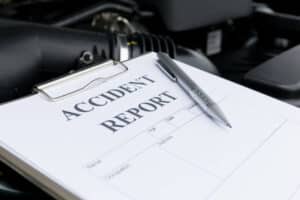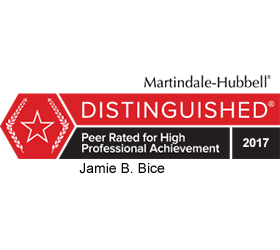 The state of Louisiana uses a two-sided standardized form called the DPSSP 3015 or Uniform Motor Vehicle Traffic Crash Report to document all vehicle collisions. When your insurance company wants the “accident report” or “crash report,” this is what they are requesting.
The state of Louisiana uses a two-sided standardized form called the DPSSP 3015 or Uniform Motor Vehicle Traffic Crash Report to document all vehicle collisions. When your insurance company wants the “accident report” or “crash report,” this is what they are requesting.
Your attorney uses this form to help understand what happened and where the accident occurred. The form has basic information about the location, the conditions, and the other driver or drivers that will help determine what other information needs to be acquired to develop your case. Veron Bice, LLC offers you this handy guide to help understand what all the checkboxes and letters mean.
Page One
At the very top is a bar code and a seven-digit number. This is the report number assigned to the case and is the number you will need to obtain the report later from the agency or department that wrote it.
The top section of Page One contains specific information about the accident: the date, time, parish or city, highway (including mile marker or road name), and the latitude and longitude if the accident took place in an open area or away from the roadway.
In this section, there are checkboxes to indicate if the accident was a hit and run, if there were injuries or fatalities, and if public property was involved.
Contributing Factors and Conditions
In the next section, the reporting officer simply selects from a number of options regarding the road, weather, and other conditions.
- “Road surface” includes alternatives, like wet, dry, ice; and a section for “road composition,” like concrete, blacktop, gravel, and so on.
- “Roadway conditions” has to do with the actual nature of the road, if it was smooth, under construction, bumpy or had potholes, or if there were animals or objects in the road.
- “Alignment” is not the vehicle but the road’s positioning in the terrain, whether it was straight and level, graded, curving, passing over a hill, etc.
- “Weather” simply indicates if the weather was clear, cloudy, rainy, foggy, and so on.
- “Relation to the roadway” is where the accident occurred, on the road itself, on the shoulder, on the median, or elsewhere.
- “Lighting” has to do with the light at the scene of the accident, whether it was full daylight, dark with full streetlights, dusk, or dawn.
Below this is a series of vehicle silhouettes showing possible vehicle configurations. The officer will check off the primary vehicle type, and then the cargo type, if any. This is helpful to you as well because if you disagree with their choice of the type of vehicle that struck you, the alternatives are printed on the form.
The next space contains the times emergency services were called, arrived, and departed the scene, and the name of the ambulance service and fire department. Note that “ambulance service” and “rescue unit” are two separate responders. Usually, the rescue unit is a fire department unit and will respond with the fire engine. The ambulance is called for transport to the hospital.
Officer Information

The Back of the Page
The back page contains space for the reporting officer to write a narrative of the scene, and a grid to draw a map of the accident scene, showing where the vehicles were located when the officer arrived on scene.
The Rest of the Information
A second report will be appended to the first page. The DPSSP 3106 Vehicle/Pedestrian Information Sheet contains all the information about the vehicles, the drivers, and the owners of any commercial vehicles involved.
Each Vehicle/Pedestrian sheet contains information for only one vehicle, so there should be at least two for any multi-vehicle collision.
This sheet contains spaces for the vehicle year, make and model, the VIN, license plate number, and whether it was towed or returned to its owner. It also has spaces for the driver’s name and address, driver’s license number, and whether they had to be taken to a hospital.
On the reverse side is a series of checkboxes like that on the Accident Report. Additional pages can be added for occupants of the vehicles, witness statements, narrative supplements, and more detailed grid maps of the scene.
Contact Us Today
If this sounds confusing, we understand. Bring your copy of your accident report to the Lake Charles car accident attorneys of Veron Bice, LLC and we can review it and explain what you’re looking at in clear and concise terms. Call us today at 337-310-1600 to schedule a confidential consultation.









